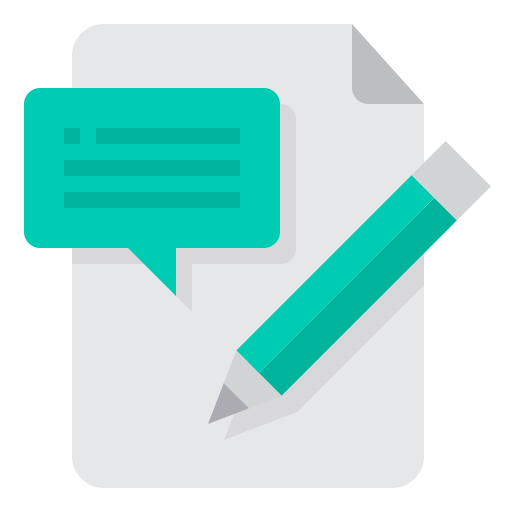The digital world is everchanging, and so are the requirements towards User Interface (UI) and User Experience (UX) designers. What was state-of-the-art last year may be routine next year and the most important thing that a person can do, who wants to pursue a successful career in this involves sitemaps, user flows and content audit.. Entering 2025, the job of a UI/UX designer has never been as important as nowadays companies focus on user-centered design to create intuitive, exciting, and effective digital products.
And if you are in and around Kochi and eager to explore this thrilling field, several UI UX courses in Kochi will provide you with all the basic and advanced knowledge to help you succeed in this field. The classes usually introduce you to user research all the way to prototyping, making you ready to face the needs of the industry. But besides formal education, what are the really essential skills that will distinguish you in 2025? Let's explore.
The Evolving Landscape of UI/UX Design
Over the last couple of years, there has been an enormous change in the user-technology interaction. Whether it is the mobile-first design as the new standard, the emergence of voice interfaces, augmented reality (AR), and virtual reality (VR), the UI/UX design canvas has increased exponentially. This growth requires designers to be more generalistic, empathic and tech-savvy than ever before. We are no longer merely concerned with making things look pretty, we are concerned with creating seamless, intuitive, and lovely experiences on an incredibly high number of platforms and ways of interacting with computers.
Top Skills You Need to Become a UI/UX Designer in 2025
A combination of the fundamental design knowledge, the latest technical expertise, and essential soft skills will be your best bet to succeed as a UI/UX designer in 2025.
1. Expert User Research & Data Analysis
The compassionate UX advocate is making the user central to good UX. This is more than the primitive surveys and interviews in 2025. The designers should be skilled in:
- Quantitative and Qualitative Research: The research does not necessarily have to be conducted through surveys and interviews: the patterns, pain points, and opportunities can also be established based on large amounts of data offered by analytics systems, A/B testing, and user behavior monitoring.
- Empathy Mapping Persona Development: Designing rich user personas based upon more than demographics, such as motivations, behaviors, and emotional states, so that the design can really be user-centered.
- Usability Testing Mastery: To perform intensive usability testing, moderated and unmoderated, to prove the design choices made and identify what can be improved. This involves being able to interpret data such as the proportion of tasks completed, the proportion of errors and time on task.
2. Expertise in Modern Design and Prototyping Tools
The principles of design do not change, but the tools change fast. The expertise on the industry-standard tools is non-negotiable in 2025.
- Figma, Sketch, Adobe XD: They remain the UI design and prototyping giants. High-fidelity mockups, interactive prototype and collaborative design workflow could be achieved only with a profound knowledge of at least one and preferably of all of them.
- Animation & Micro-interaction Tools: The essential tools are Principle, After Effects, or even high-fidelity animated features in Figma, which help to create interesting micro-interactions and animations that can improve the user experience.
- Design Version Control: Familiarity with tools such as Abstract or even Git (in the case of design files) is starting to become valuable in order to easily collaborate with other designers and with developers.
3. Information Architecture & Content Strategy
An interface can be as pretty as possible but it will not help the user to find what he/she wants.
- Rational Content Organization: Complex information is organized in a logical and easily locatable way; it has clear navigation paths. This includes sitemaps, user flows and content audit.
- UX Writing & Microcopy: Writing simple, universal, and useful text in the interface. That covers all the button labels, error messages, onboarding instructions, and any other words that a user sees on the screen, and it will be well worth the language supporting the user experience.
- Content Governance: Knowledge of the generation, management and maintenance of content through the product lifecycle, particularly at large scale projects.
4. Emerging Technology Interaction Design
UI/UX outside of screens is the way of the future.
- Voice User Interface (VUI) Design: With the rise of voice assistants, creating straightforward conversational interfaces demands another kind of expertise, such as the knowledge of natural language processing and dialog flow.
- AR (Augmented Reality) & VR (Virtual Reality) UX: Creating immersive and natural experiences in three-dimensional space, taking into account the principles of spatial interaction, gesture control, and comfort of use.
- Haptic Feedbackswing: Learning about the ways in which tactile feedback can improve user experience and how to design haptic feedback that will correspond to different interactions.
5. Front-End Development Knowledge (Not Necessarily Coding)
Although UI/UX designers are not supposed to be full-stack developers, having an elementary knowledge of UI development is of invaluable help.
- HTML, CSS, JavaScript Basics: Knowing the capabilities and limitations of these core web technologies helps designers create feasible and efficient designs, leading to smoother handoffs to developers.
- Responsive Design Principles: Understanding how designs adapt across different screen sizes and devices is crucial for delivering consistent experiences. This includes knowledge of frameworks and grid systems.
- Component-Based Design: Familiarity with design systems and component libraries, which streamline the design and development process by promoting reusability and consistency.
6. Accessibility & Inclusivity
It's no longer a special consideration to take into account everyone's wants; it's really important.
- WCAG (Web Content Accessibility Guidelines) Compliance: Adhering to accessibility standards to ensure digital products are usable by people with disabilities, including those with visual, auditory, cognitive, and motor impairments.
- Inclusive Design Practices: Considering diverse user needs and backgrounds throughout the design process, ensuring products are equitable and welcoming for all.
- Understanding Assistive Technologies: Familiarity with screen readers, voice control, and other assistive technologies to design experiences that integrate seamlessly with them.
7. Design Systems & Scalability
As products grow in complexity, maintaining consistency and efficiency becomes a challenge.
- Building and Maintaining Design Systems: Creating comprehensive libraries of reusable UI components, design guidelines, and documentation to ensure consistency across products and teams.
- Scalable Design Thinking: Designing solutions that can easily adapt to future growth, new features, and evolving user needs without requiring complete overhauls.
8. Soft Skills: The Unsung Heroes
Technical skills are vital, but soft skills are often what truly differentiate a good designer from a great one.
- Empathy: The ability to truly understand and share the feelings of others – especially users. This forms the foundation of user-centered design.
- Communication & Presentation Skills: Articulating design decisions clearly and persuasively to stakeholders, team members, and clients. This includes effective storytelling around design solutions.
- Collaboration & Teamwork: Working effectively with cross-functional teams including developers, product managers, marketers, and other designers.
- Critical Thinking & Problem Solving: Analyzing complex problems, identifying root causes, and devising creative, effective solutions.
- Adaptability & Continuous Learning: The UI/UX field is constantly evolving. A willingness to learn new tools, methodologies, and adapt to changing trends is crucial for long-term success.
How to Get Started Your UI/UX Design Career in 2025
The idea of starting a career in UI/UX design in 2025 is thrilling, yet one needs to be strategic about it.
- Establish a Solid Foundation: Begin by getting a hold of the fundamentals of UI and UX design. It can be done via online courses, bootcamps or by academic programs. Several IT training institutes have added special UI/UX courses to their curriculum, which encompass the scope of the required skills.
- Learn the Tools: Pick one or two industry-standard design tools (such as Figma or Adobe XD) and master them. Get as much practice as you can by remaking existing designs or by doing personal projects.
- User Research: Not only designer, but know why you are designer. Get some experience of user interviewing, creating personas and user journey mapping.
- Build a Portfolio: Create a portfolio; it's your best asset. Presenting the design process is equally as important as the final product. Provide examples of the challenge, your investigation, your design choices, and the importance of your effort. Begin with pro bono labor, personal projects, or perhaps redesigning some current programs.
- Get Feedback and Repeat: Have mentors and peers evaluate your work, and be willing to accept constructive feedback. What distinguishes a great designer is their ability to iterate and refine in response to feedback.
- Network: Participate in online communities, go to industry events (even those held online), and meet other designers. Opportunities for learning, employment, and mentoring may arise as a result of networking.
- Internships or Freelance Gigs: The experience in the field can not be overestimated. Seek internship, entry-level jobs, or freelance work where you can use your skills and develop your portfolio.
- Stay Updated: The UI/UX environment is dynamic. Subscribe to blog posts, podcasts, and industry thought leaders to keep up with new trends, tools, and best practices.
Conclusion
The demand in the market of the qualified UI/UX designers is permanently growing since more companies understand the value of the user experience as one of the primary differentiators of the digital products. It is clear that the most significant thing that future designers need to develop in 2025 is the solid skill set that will encompass not only the technical aspect of designing but also the good command of human behavior, future technologies, and the process of teamworking. By focusing on continuing education, creating a great portfolio, and being an active member of the design community, you will be able to have a great and rewarding career out of this incredibly dynamic industry. Thus, whether you are going to start with UI UX courses in Kochi or you are going to embark on a self-education journey, the path ahead to become one of the best UI/UX designers in 2025 is clear: educate yourself, train, evolve, and stay user-centered.







Post Comments (0)